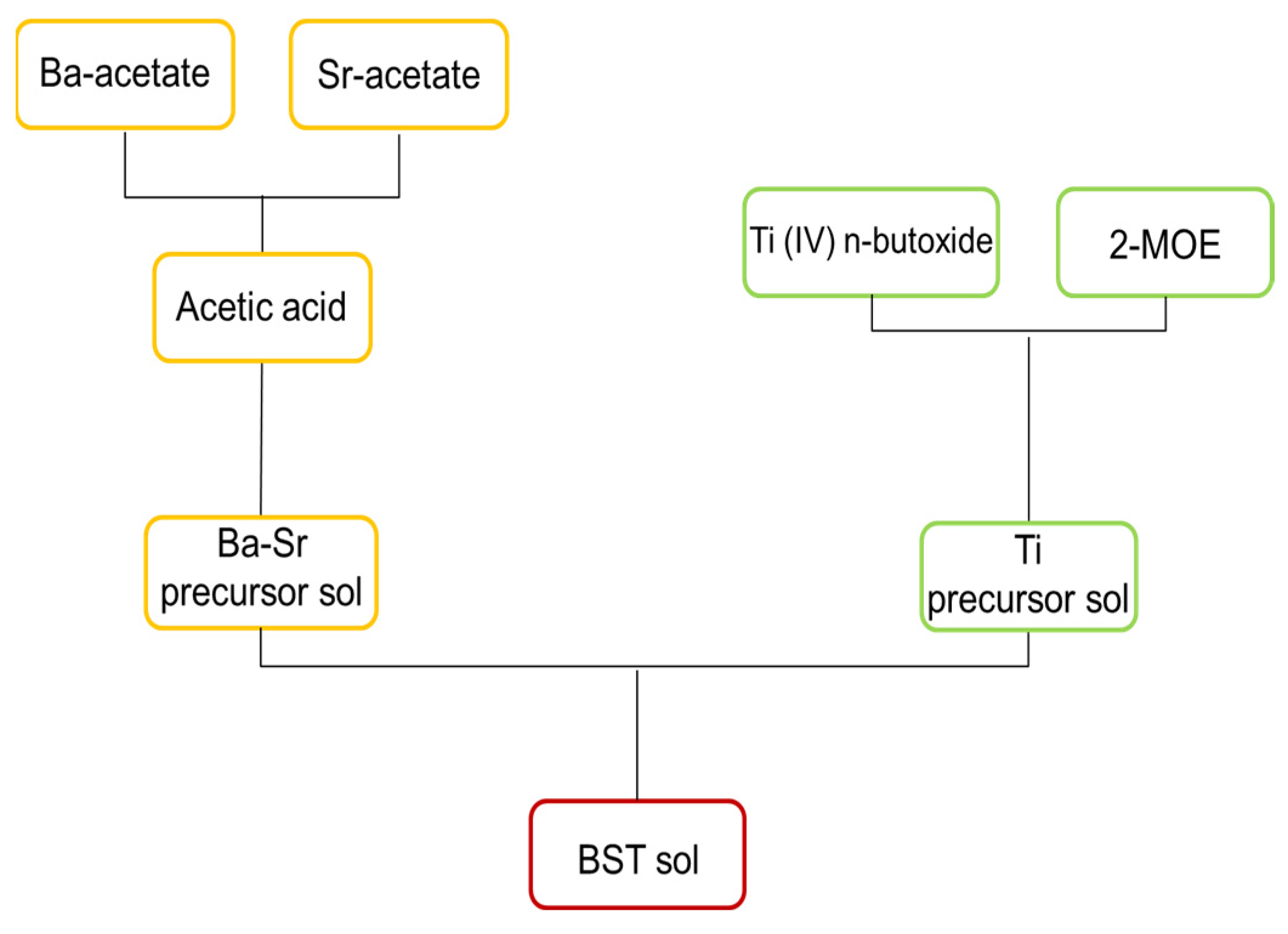Chemical Solution Deposition of BaxSr1-xTiO3 Thin Films for Energy Storage Applications †
Abstract
:1. Introduction
2. Materials and Methods
3. Results and Discussion
4. Conclusions
Acknowledgments
References
- Majdoub, M.S.; Maranganti, R.; Sharma, P. Understanding the origins of the intrinsic dead layer effect in nanocapacitors. Phys. Rev. B Condens. Matter Mater. Phys. 2009, 79, 1–8. [Google Scholar] [CrossRef]
- Huang, Y.H.; Wu, Y.J.; Li, J.; Liu, B.; Chen, X.M. Enhanced energy storage properties of barium strontium titanate ceramics prepared by sol-gel method and spark plasma sintering. J. Alloys Compd. 2017, 701, 439–446. [Google Scholar] [CrossRef]
- Pečnik, T.; Glinšek, S.; Kmet, B.; Malič, B. Combined effects of thickness, grain size and residual stress on the dielectric properties of Ba0.5Sr0.5TiO3 thin films. J. Alloys Compd. 2015, 646, 766–772. [Google Scholar] [CrossRef]



Publisher’s Note: MDPI stays neutral with regard to jurisdictional claims in published maps and institutional affiliations. |
© 2020 by the authors. Licensee MDPI, Basel, Switzerland. This article is an open access article distributed under the terms and conditions of the Creative Commons Attribution (CC BY) license (https://creativecommons.org/licenses/by/4.0/).
Share and Cite
Benes, F.; Dragomir, M.; Malič, B.; Deluca, M. Chemical Solution Deposition of BaxSr1-xTiO3 Thin Films for Energy Storage Applications. Proceedings 2020, 56, 9. https://doi.org/10.3390/proceedings2020056009
Benes F, Dragomir M, Malič B, Deluca M. Chemical Solution Deposition of BaxSr1-xTiO3 Thin Films for Energy Storage Applications. Proceedings. 2020; 56(1):9. https://doi.org/10.3390/proceedings2020056009
Chicago/Turabian StyleBenes, Federica, Mirela Dragomir, Barbara Malič, and Marco Deluca. 2020. "Chemical Solution Deposition of BaxSr1-xTiO3 Thin Films for Energy Storage Applications" Proceedings 56, no. 1: 9. https://doi.org/10.3390/proceedings2020056009
APA StyleBenes, F., Dragomir, M., Malič, B., & Deluca, M. (2020). Chemical Solution Deposition of BaxSr1-xTiO3 Thin Films for Energy Storage Applications. Proceedings, 56(1), 9. https://doi.org/10.3390/proceedings2020056009






